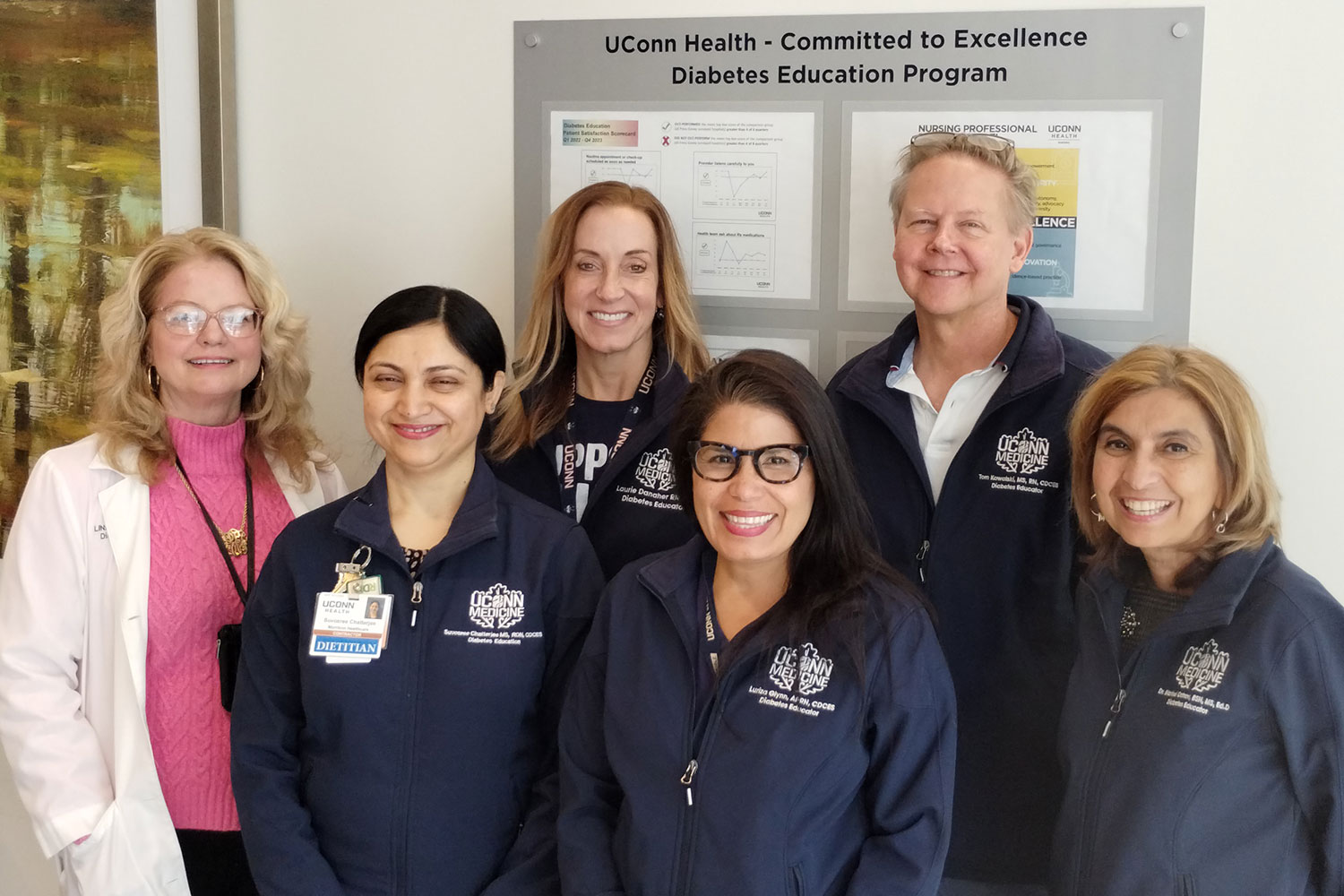Men and boys of color in Connecticut are less likely to have health insurance, more likely to be victims of violence, and more likely to die early from preventable diseases than their non-Hispanic white counterparts, reports UConn’s Health Disparities Institute.
The findings are part of the Health Disparities Institute’s (HDI) inaugural Report Card on Health Equity Among Men and Boys of Color in the state. The institute looks at differences in health care access and outcomes in all populations in the state, but chose to focus its first report card on men and boys of color because the disparities are so striking, and addressing them could help the population as a whole.

“When men and boys perish prematurely, women and girls have to pick up the pieces of these lost lives,” and this affects entire communities negatively, says HDI director and associate professor of psychiatry Wizdom Powell. And despite being one of the richest states, Connecticut has huge income disparities between men of color and non-Hispanic white men. “We’re becoming a minority majority nation. What that means is that in the future, the workforce will be primarily people of color. And if those people are dying prematurely, are out of touch with schooling, or incarcerated, we’re going to have a problem,” Powell says. In other words, increasing health equity is not just a matter of social justice; for Connecticut, it may be a matter of economic survival.
Because of difficulties getting comparable data from national sources, the report does not do much comparison of Connecticut with other parts of the U.S., though sharing and standardizing data on health equity-related measures is one of the goals of the HDI. However, the report does show some differences between different regions of the state itself. For example, a map of Connecticut state senate districts, color-coded by number of residents who report being in “very good health”, shows a distinct correlation between higher numbers of minority residents, and having fewer residents who report being in very good health.
Other measures show the relative health of men and boys of color in the state as a whole. The rate of men and boys of color diagnosed with liver, prostate, and colon cancers was one and a half to five times higher than in non-Hispanic white men. And, especially among young men ages 20 to 34 and in early middle age (35 to 44), men of color were far more likely to die of cancers or of heart, cardiovascular, and lung diseases.
Boys of color make up 36 percent of boys in Connecticut at age five, but only 15 percent of men by age 55. Those in between perish at far higher rates than their non-Hispanic white counterparts. — Health Disparities Institute Report Card
The report also identifies social experiences that can negatively impact health; for example, 11 percent of black boys report being threatened with a weapon at school in the past year, compared with less than 8 percent of Hispanic and white boys. Those kinds of experiences can affect boys’ health and success, and reverberate further on in life. Men of color are also more likely to be incarcerated than their non-Hispanic white counterparts, which can affect their health directly, as well as their employment prospects and community engagement possibilities when they reenter society.
All these health disparities identified in the report have a marked effect on how Connecticut’s population looks as it ages. Boys of color make up 36 percent of boys in Connecticut at age five, but only 15 percent of men by age 55. Those in between perish at far higher rates than their non-Hispanic white counterparts.
The HDI recommends several actions Connecticut can take right now to address these disparities. At a policy level, it recommends protecting and building on the Affordable Care Act’s expansion of health coverage, which will allow men and boys of color to get health screenings and take care of problems before they become life-threatening. The state is one of the national recipients of the State Innovation Model grants from the Centers for Medicare and Medicaid Services, and leaders are working on strategies to integrate health care into other community services. Such strategies could enhance outreach to men and boys who might not otherwise visit a doctor.
On a community level, HDI has partnered with JCJ Architecture in Hartford to host a conversation with an artists’ gallery series called “Visualizing Health Equity among Boys and Men of Color” and the #BraveNewSpaces initiatives, both of which leverage art and intergenerational community conversations to promote authentic dialogue and trust. The HDI is looking to expand both community programs to other parts of the state. Read more: (Visual Arts Inspiring Health Equity for CT Boys and Men of Color.)

The state also needs to bring more people of color into health care services delivery. People feel more comfortable with doctors, nurses, and therapists who look like them and have shared experiences. UConn Health already has a number of pipeline programs that work towards creating a more diverse healthcare profession. Last year, Gov. Malloy signed “An Act Concerning Community Health Workers,” which established a more formal recognition of the role played by community liaisons in healthcare delivery. HDI asserts that recruiting more men of color to serve as community health workers could provide unique pathways to employment and assist health systems in reaching medically underserved boys and men.
This Report Card on Health Equity in Men and Boys of Color is a baseline; the Institute plans to update the report every year, and also begin one on Health Equity in Women and Girls of Color this autumn.



